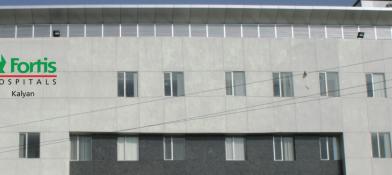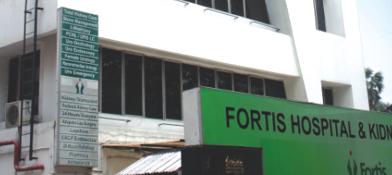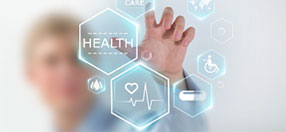Bilirubin Test: Understanding Your Liver and Blood Health
The bilirubin test is a standard blood test used to measure the amount of bilirubin in your bloodstream. Bilirubin is a yellowish-orange pigment that is produced during the normal breakdown of red blood cells. It is a waste product that is processed by the liver, passed into the bile, and eventually excreted from the body. Measuring bilirubin levels is a critical component of a liver function test (LFT) panel and serves as a vital indicator of your liver's health, the function of your bile ducts, and the rate at which your red blood cells are being broken down.
Elevated bilirubin levels (a condition called hyperbilirubinemia) are the cause of jaundice, a yellowing of the skin and the whites of the eyes. An abnormal bilirubin result can be the first clue to a wide range of conditions, from common and benign genetic syndromes to more serious issues like hepatitis, cirrhosis, gallstones, or hemolytic anemia. This guide will explain the journey of bilirubin through the body, what the different types of bilirubin mean, the conditions associated with high levels, and what to expect from the test.
What is the Bilirubin Test?
A bilirubin test is a laboratory analysis of a blood sample to quantify the levels of different forms of bilirubin. The results are typically reported for three distinct values:
- Total Bilirubin: This measures the total concentration of all bilirubin in your blood (both conjugated and unconjugated). It gives a general overview of whether bilirubin levels are normal or elevated.
- Direct (Conjugated) Bilirubin: This measures the form of bilirubin that has been processed (conjugated) by the liver to make it water-soluble. It is directly measured in the lab. High levels of direct bilirubin typically point to a problem with the liver's ability to excrete bile or a blockage in the bile ducts after the liver.
- Indirect (Unconjugated) Bilirubin: This measures the form of bilirubin that has been created from red blood cell breakdown but has not yet been processed by the liver. This value is not measured directly but is calculated by subtracting the direct bilirubin level from the total bilirubin level (Indirect = Total - Direct). High levels of indirect bilirubin usually indicate that the body is breaking down red blood cells too quickly or that the liver is having trouble taking up and processing the bilirubin.
By analyzing the ratio of these different types, your doctor can gain significant clues about the location and nature of the underlying medical problem. In some cases, a urine test may also be done to check for the presence of bilirubin and a related substance, urobilinogen, which can provide further diagnostic information.
The Science: Understanding Bilirubin Metabolism
To appreciate what a bilirubin test reveals, it is essential to understand the normal lifecycle of bilirubin in the body. This is a multi-step process involving the blood, spleen, liver, and intestines.
Step 1: Red Blood Cell Breakdown and Bilirubin Formation
Your red blood cells (RBCs) have a lifespan of about 120 days. When they become old or damaged, they are removed from circulation, primarily by the spleen. The breakdown of these cells releases hemoglobin, which is further broken down into heme and globin. The heme portion is converted into a substance called biliverdin, which is then rapidly converted into unconjugated bilirubin. This form is also known as indirect bilirubin.
Characteristics of Unconjugated (Indirect) Bilirubin:
- It is fat-soluble (lipophilic).
- It is toxic to cells in high concentrations.
- It cannot be excreted directly by the kidneys.
- It binds to a protein called albumin to be transported safely through the bloodstream to the liver.
Step 2: Liver Uptake and Conjugation
The liver is the body's primary processing plant. Liver cells (hepatocytes) take up the unconjugated bilirubin from the bloodstream. Inside the liver cell, an enzyme called uridine diphospho-glucuronosyltransferase (UGT) attaches molecules of glucuronic acid to the bilirubin. This chemical process is called conjugation. The result is the formation of conjugated bilirubin, also known as direct bilirubin.
Characteristics of Conjugated (Direct) Bilirubin:
- It is water-soluble (hydrophilic).
- It is non-toxic.
- It can be excreted into the bile.
Step 3: Excretion into Bile and the Intestines
The newly formed conjugated bilirubin is secreted from the liver cells into the bile ducts. The bile, carrying the bilirubin, travels through the gallbladder and into the small intestine.
Step 4: Conversion in the Gut and Elimination
Once in the intestine, gut bacteria act on the conjugated bilirubin, converting it into a group of substances called urobilinogens.
- Most of this is further converted into stercobilin, which is the pigment that gives stool its characteristic brown color.
- A small amount of urobilinogen is reabsorbed back into the bloodstream, filtered by the kidneys, and excreted in the urine as urobilin, which contributes to the yellow color of urine.
The bilirubin test essentially acts as a quality control check on this entire metabolic pathway. An abnormality at any step can lead to a buildup of bilirubin in the blood.
When is the Bilirubin Test Recommended?
A bilirubin test is a very common test ordered for several reasons:
- To Investigate Jaundice: This is the most common reason. Jaundice is a yellow discoloration of the skin and the whites of the eyes (sclera) and is the primary sign of high bilirubin levels. The test is essential to determine the cause of the jaundice.
- As Part of a Liver Function Panel (LFT): It is a standard component of a routine LFT to assess the overall health of the liver.
- To Monitor Liver Disease: For patients with known liver conditions like hepatitis or cirrhosis, regular bilirubin tests help monitor disease progression and treatment effectiveness.
- To Diagnose Bile Duct Blockages: The test is critical if a blockage is suspected due to gallstones, tumors, or strictures. Symptoms may include abdominal pain, pale stools, and dark urine.
- To Evaluate for Hemolytic Anemia: If a doctor suspects that red blood cells are being destroyed at an accelerated rate, a bilirubin test (which would show high indirect bilirubin) is a key part of the diagnostic workup.
- To Monitor Newborn Jaundice: Bilirubin testing is routine for newborns to screen for and manage jaundice, which is common in the first week of life.
- To Assess for Suspected Drug Toxicity: Many medications can affect liver function, and a bilirubin test can help monitor for potential drug-induced liver injury.
Interpreting High Bilirubin Levels (Hyperbilirubinemia)
An elevated bilirubin level signals a problem, and the type of bilirubin that is elevated provides the roadmap for diagnosis.
Predominantly High Unconjugated (Indirect) Bilirubin
This indicates a problem before the liver's processing step. Either too much bilirubin is being produced, or the liver is struggling to take it up and conjugate it.
Hemolysis: An increased rate of red blood cell destruction overwhelms the liver's capacity to process bilirubin. Causes include hemolytic anemias (like sickle cell disease or thalassemia), transfusion reactions, or autoimmune conditions.
Gilbert's Syndrome: A very common, mild, and harmless genetic condition where there is a partial deficiency of the UGT enzyme needed for conjugation. It causes intermittent, mild jaundice, especially during times of stress, illness, or fasting, but requires no treatment.
Crigler-Najjar Syndrome: A rare and severe genetic disorder involving a near-complete absence of the UGT enzyme.
Newborn Jaundice:
- Physiological Jaundice: Very common in newborns because their liver enzymes are not yet fully mature, leading to a temporary buildup of unconjugated bilirubin. This usually resolves on its own.
- Pathological Jaundice: Can be caused by blood group incompatibility between mother and baby (Rh or ABO incompatibility), leading to severe hemolysis.
Predominantly High Conjugated (Direct) Bilirubin
This indicates a problem within the liver or after the liver in the bile ducts. The liver is able to conjugate the bilirubin, but it cannot excrete it properly.
Hepatocellular Damage: Damage to the liver cells impairs their ability to transport conjugated bilirubin into the bile. Causes include:
- Viral Hepatitis: Inflammation of the liver caused by Hepatitis A, B, C, etc.
- Alcoholic Liver Disease: Damage caused by excessive alcohol consumption.
- Cirrhosis: Advanced scarring of the liver from any chronic liver disease.
- Drug-Induced Liver Injury.
Biliary Obstruction (Cholestasis): There is a physical blockage in the bile ducts, preventing the flow of bile from the liver to the intestine. The conjugated bilirubin backs up and spills into the bloodstream. Causes include:
- Gallstones lodged in the common bile duct.
- Tumors of the pancreas, gallbladder, or bile duct.
- Biliary Strictures: Narrowing of the bile ducts due to inflammation or scarring.
Our Specialists
The interpretation of a bilirubin test and the diagnosis of liver and gallbladder diseases require the expertise of a specialist in digestive and liver diseases.
Dr. Gourdas Choudhuri
CHAIRMAN-GASTROENTEROLOGY | Fortis Gurgaon
Dr. (Prof.) Amit Javed
SENIOR DIRECTOR - GI, GI ONCOLOGY, MINIMAL ACCESS & BARIATRIC SURGERY | Fortis Gurgaon
Dr. Subrat Kumar Acharya
EXECUTIVE DIRECTOR GASTROENTEROLOGY | Fortis Okhla
Dr. Ajay Kumar Kriplani
PRINCIPAL DIRECTOR & HOD LAP GI, GI ONCO, BARIATRIC & MIS SURGERY | Fortis Gurgaon
Dr. Neeraj Chaudhary
SENIOR DIRECTOR & HOD – GI, GI ONCOLOGY, MINIMAL ACCESS & BARIATRIC SURGERY | Fortis Vasant Kunj
Patient Stories
“I went to the doctor because my family noticed my eyes were looking yellow, and I had been feeling unusually tired. A simple blood test showed very high bilirubin levels, mostly the direct type. The gastroenterologist at Fortis immediately ordered an ultrasound, which revealed a gallstone was blocking my bile duct. After a minimally invasive procedure to remove the stone, my bilirubin levels returned to normal within a week, and the jaundice disappeared. The bilirubin test was the first critical clue that pointed to the exact problem”. — A. Kumar, 45, Delhi
“Throughout my life, I've had episodes where I'd look slightly yellow, especially if I was sick with the flu or hadn't eaten well. It always caused a lot of anxiety. Finally, a doctor did a full workup, including a bilirubin test which showed slightly elevated indirect bilirubin. After ruling out other causes, I was diagnosed with Gilbert's syndrome. My hepatologist explained that it was a harmless genetic quirk and not a disease. Understanding this has been a huge relief, and I no longer worry when I look a bit jaundiced during times of stress”. — S. Menon, 28, Gurugram
The Bilirubin Test Procedure: What to Expect
The process is a simple blood draw.
- Preparation: You will likely be asked to fast (not eat or drink anything except water) for at least four hours before the test. This is because certain foods can temporarily affect bilirubin levels. You should also inform your doctor of any medications you are taking, as some drugs can interfere with the results.
- For Adults and Older Children: A phlebotomist will draw a blood sample, usually from a vein in your arm.
- For Newborns: For infants, the blood sample is usually collected using a heel prick. A small lancet is used to make a tiny puncture on the baby's heel, and a small amount of blood is collected in a tube.
Myths vs Facts
Take the Next Step
The bilirubin test is a fundamental yet powerful diagnostic tool that provides a wealth of information from a single blood sample. It is a critical window into the health of your liver, the patency of your bile ducts, and the stability of your red blood cells. If you are experiencing symptoms such as jaundice, persistent fatigue, abdominal pain, dark urine, or pale stools, it is essential not to ignore them.
A consultation with a gastroenterologist or hepatologist can help get to the root of the problem. An early and accurate diagnosis, often initiated by a simple bilirubin test, is the key to effective treatment and a positive outcome.
Frequently Asked Questions
1. What are the normal ranges for bilirubin?
Ans. Normal ranges can vary slightly between laboratories, but typically for an adult, Total Bilirubin is about 0.1 to 1.2 mg/dL, and Direct Bilirubin is generally less than 0.3 mg/dL.
2. What causes dark urine and pale stools when bilirubin is high?
Ans. This classic combination occurs with a blockage in the bile ducts. The conjugated (water-soluble) bilirubin cannot get into the intestine, so it backs up into the blood and is filtered by the kidneys, making the urine dark. Since no bilirubin reaches the gut, the stool lacks its brown pigment and appears pale or clay-colored.
3. Is there any risk associated with the bilirubin test?
Ans. The test is a standard blood draw and is very safe. The risks are minimal and may include slight bruising or soreness at the needle site, and a very small risk of infection.
4. Why is newborn jaundice so common?
Ans. A newborn's liver is not fully mature, and the UGT enzyme that conjugates bilirubin is not yet working at full capacity. At the same time, newborns have a higher turnover of red blood cells. This combination of increased production and decreased processing leads to a temporary buildup of unconjugated bilirubin, causing physiological jaundice.
5. What is Gilbert's Syndrome?
Ans. Gilbert's syndrome is a common, inherited condition that affects the liver's ability to process bilirubin. People with this condition have a reduced level of the UGT enzyme. It is harmless and does not cause long-term health problems or require any treatment, though it can cause mild, intermittent jaundice.
6. What is the treatment for high bilirubin?
Ans. The treatment is entirely dependent on the underlying cause. If it's a gallstone blocking a bile duct, an endoscopic procedure (ERCP) may be needed. If it's viral hepatitis, antiviral medications may be prescribed. If it's hemolytic anemia, treatments will focus on stopping the red blood cell destruction.
7. Can I do anything to prepare for my bilirubin test?
Ans. Yes. Your doctor will likely ask you to fast (no food or drink, except water) for about four hours before the blood draw. You should also avoid strenuous exercise just before the test, as it can temporarily raise bilirubin levels.
8. What does it mean if bilirubin is found in the urine?
Ans. Only conjugated (direct) bilirubin is water-soluble and can pass into the urine. Unconjugated bilirubin cannot. Therefore, the presence of bilirubin in the urine (bilirubinuria) is a definite sign that direct bilirubin levels are high in the blood and points towards liver cell disease or bile duct obstruction.
































